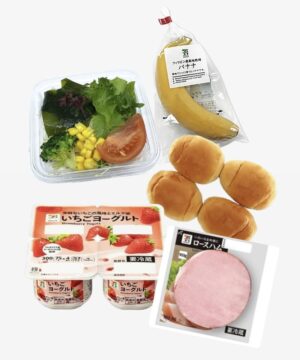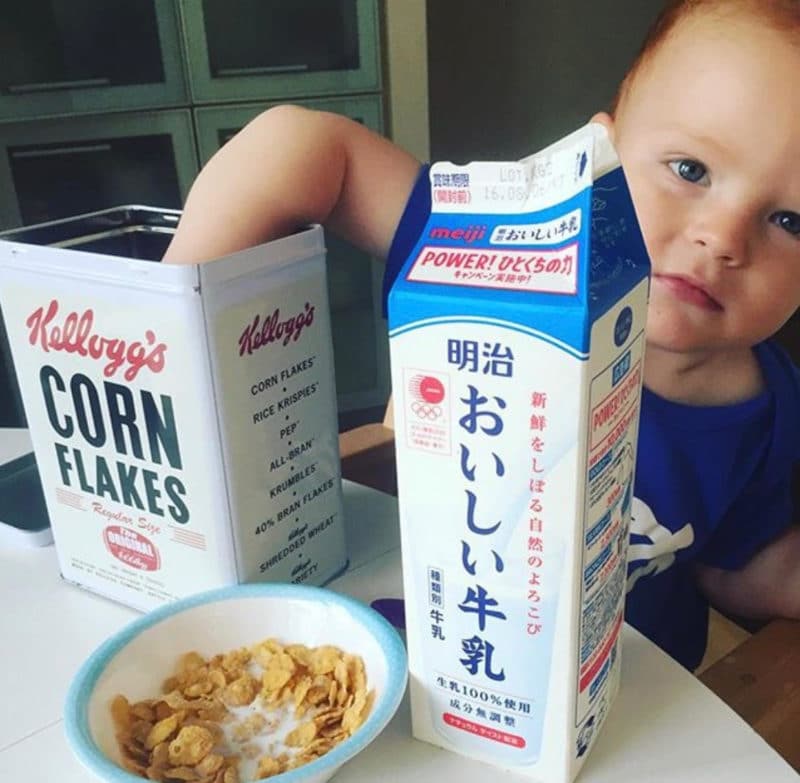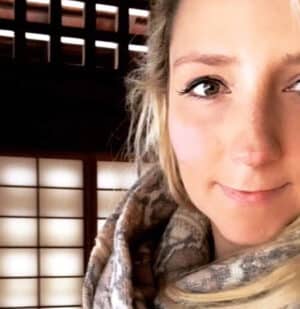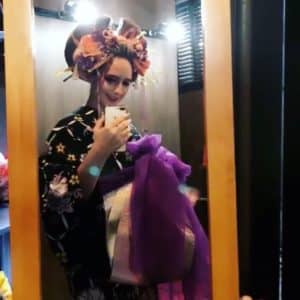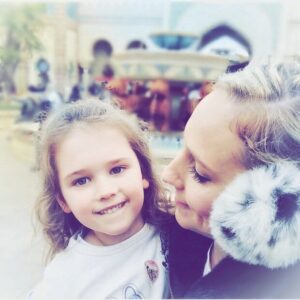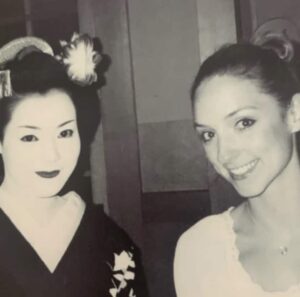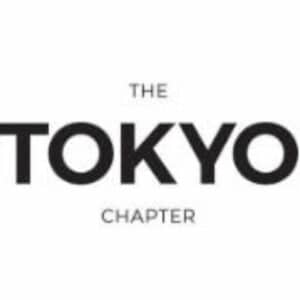
My “The Tokyo Chapter” readers really are the best.
All of this advice regarding travelling in Japan with neurodivergent children in Japan is from my immediate circle as well as more than 30 parents who read my blog and were generous enough to share their tips and experiences. 90% of the advice comes from Mums but the Dads also wrote me beautiful long emails and messages too.
Some of these tips are consolidated advice (when the similar tips were repeated a few times) and some I am sharing as anonymous quotes.
So here are the generous tips from parents who have travelled to Japan (or lived in Japan) with children with ADHD, Autism or other neurodivergent conditions.
This blog post contains some affiliate links. This means that I will receive a small commission if you make a purchase using my link – at no additional charge to you.
ADVICE FOR THE PLANNING STAGES OF YOUR JAPAN HOLIDAY WITH A NEURODIVERSE CHILD
“Our 8 year old has ADHD. He actually travelled really well for the two weeks that we were away but the thing that helped us the most was allowing our boys to help plan our holiday beforehand. That way he knew what to expect and was excited about trying new things.”
“Japan is the best place to travel (especially with special interests like trains) but you have to plan accordingly.”
“It’s important to stay close to a central metro station, for us. and take a taxi if it means a few less train changes – it stops a lot of the anxiety in terms of what to expect.” Here is my advice regarding taxis in Japan, if you’d like to read.
“Don’t go in summer!” – I speak more about this in my “When to visit Japan” article here.
“Lean into your child’s hyperfocus / special interests and let it lead some of the itinerary.” See here for tips if your child adores robots or here if they love trains and transportation.
Advice from a 9 year old “Travel with people who understand you don’t like to rush and, if possible, give yourself a day of no plans after arrival, to get used to new surroundings.”
“If you have the time don’t plan days with that have back to back bookings it just adds extra pressure to everyone. Mix days of bookings with flexible sightseeing days so if you need to rest you can. There’s lots of things to see and do in Tokyo and Japan
that you don’t need to book.”
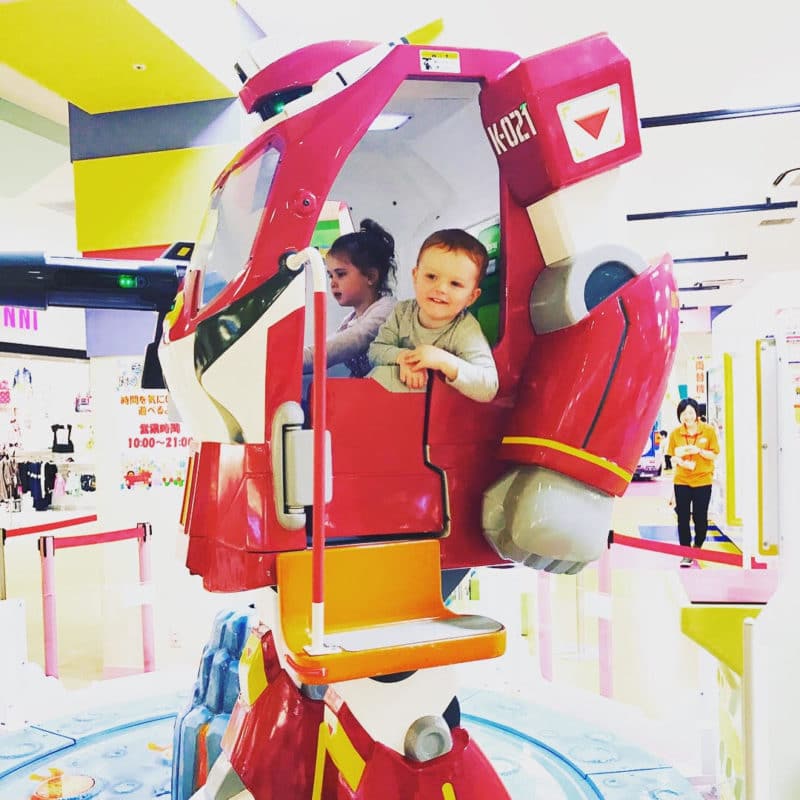
EXTRA ITEMS TO CONSIDER WHEN PACKING FOR A TRIP TO JAPAN WITH A NEURODIVERGENT CHILD
See here for my standard “what to pack advice for travelling to Japan with kids” and here are some additional suggestions for children with extra needs to consider.
Familiar food and snacks from home
Even if your child loves some Japanese snacks, it is always great to have some options that feel safe and familiar.
Here is my general advice for picky eaters in Japan if you do get stuck without something familiar near by.
“We pack condiments. Might sound weird but we have a jar of jam and small packets of the ketchup my daughter loves. We also bring chocolate milk powder to make all the milk taste more familiar. Oh and always corn flakes.”
You can also choose an apartment style hotel with a kitchenette like a Mimaru.
Also -if you choose an apartment style hotel with a kitchenette and a manned front desk – did you know that can have different types of milk and gluten free and vegan options delivered anywhere in Japan via the National Azabu website? This international supermarket is located in Hiroo, Tokyo (you can also, of course, visit in person). You can also order online and have them deliver groceries to you if you are staying in Minato-ku, Tokyo (aka the Minato ward, Tokyo) OR you can have these items delivered anywhere in Japan using the Yamato delivery service (price is from 1200 yen per box of food delivered.) This is one of many reasons to stay at a hotel and not an airbnb in Japan – so that a hotel can accept parcels on your behalf -if you’re super clever, you can order ahead and have a box of low-allergen foods for you arrive the day you check in to your hotel (if you email the hotel ahead – they will put cold items in the fridge for you.) National Azabu in Tokyo stocks almond milk, oat milk, walnut milk, soy milk as well as pistachio milk. Here is my general advice on buying different types of milk in Japan.




“We are low demand – 5 year old autistic kiddo with PDA profile and ARFID. 8 year old with ADHD (undiagnosed.) We brought a loaf of preferred bread with us. We found an item he would eat – a cheese bread stick at 7-Eleven – and we bought it x 3 every time we could and brought it everwhere.”
(This advice is from a parent who is also a dietician) “From a food perspective, based on what patients have told me..of course, bring enough favourite snacks to last you then ENTIRE trip. Even things you think might be the same here might taste different. Don’t expect to find any of the common convenience foods here that you have in your own home country (like pouches of applesauce – not common here but everywhere in the US.) And, if you’re worried about food/calorie intake, you can pack ready to drink nutritional shakes or mixes that you know they like. ”
Earmuffs and/or Headphones
If your child has an audio sensitivity – earmuffs and headphones are a good idea. Some parents also said that those loop headphones were great.
If this isn’t something you incorporate into your daily life already, then consider some “practice” days/excursions using them before you leave.
Please note, this doesn’t mean that Japan is loud and crazy everywhere – most restaurants and trains and shopping malls can actually be even more quiet than other countries. That being said though- the train platforms can be extremely noisy.
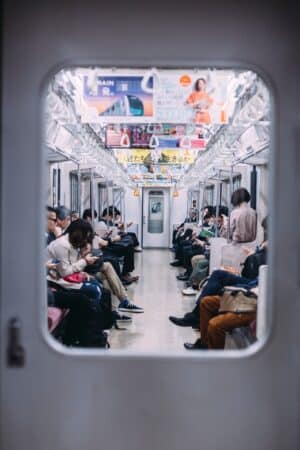
“My 12 year old with anxiety really needed her noise cancelling headphones, sunglasses (to avoid seeing things that trigger anxiety such as horror/halloween things) and having written plans of what we were doing/how we would get there.”
Fidgets, chew toys, distraction toys
“We always have some little toys in our bags. That seems obvious but like pop-its or things to fidget with on the train, sunglasses to keep them distracted. Helps with our little adhd beans.” See here for my general suggestions for toys to keep kids busy and sitting at the table in restaurants in Japan and happy on planes.
Doctor Letters
If your child is unable to line up it is a good idea to have a doctor’s letter with you for the theme parks (see more details on this below.)
Blackout Travel Blinds (or those black out cot covers for small children)
Many hotel and ryokan accommodation windows are made of that light coloured rice paper style kind of shutters – meaning that the sun (especially in the warmer months where the sun can rise as early as 4 or 5 am) can stream right in. If you think this might be a problem for you and your family (especially if your child has light sensivities) – you might want to also pack a large piece of black material and some clothes pegs (or, if you want to be fancier than that, you can google “travel blackout blinds” as I hear that is a thing.
This is also handy if you’re dealing with jetlag with kids.
For smaller kids -there are these types of blackout covers to go over cots / portacots or pack’n’ plays ( this isn’t a sponsored link or an affiliate- it’s just to give you an idea of the what is out there.)
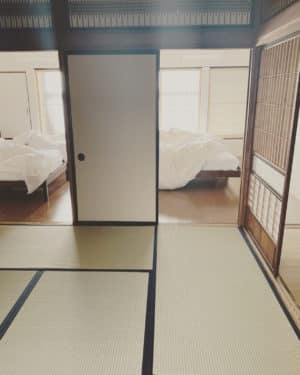
A Travel Journal
“My daughter liked to there in these awesome travel notebooks as a distraction/ while waiting. She would write plans of where we were going. Just as an anxiety reducing exercise, being able to have the thoughts on paper.” This is the amazon link to the Japan travel journal this parent was speaking of.
There are also travel journal and activity booklets sold on Etsy.
Strollers – even for bigger kids if they can fit
“We did two prams – for 5 and 8 year olds.” I’ve written more about how a stroller can change the whole Japan holiday- in a positive way – here.
Please note that a sunflower lanyard is rarely recognized in Japan. You are welcome to have children wear them -but most people will innocently have no idea what they signify.
If you are hoping to purchase “visitors with disabilities” tickets at museums, events and shows – you will need to read the fine print as you will often need to provide a disability certificate of some sort from home.
THINGS TO DO AHEAD OF YOUR JAPAN HOLIDAY
Talk about expectations and cultural differences in advance
“We talked about not eating and drinking while walking.”
“Our kids need to know what we’re doing.”
“We watch youtube videos about Japan and talk about important cultural aspected (like temples, being quiet on trains. We may also explore creating social stories with our OT to help with any tricky transitions/routine changes.”
“Set expectations each day, and windows of time they know they can rest/regulate. Divide and conquer. Always have someone happy to sit with them at a drop of a hat if they need time (while others continue on if needed.) Reward, bribe and encourage when they achieve beyond expectations.
If you think your child is ready- talk about introducing some new foods or different versions of difficult foods
“We have been trying Japanese food and introduced our daughter (and my husband) to sushi so we have a new safe food.” I have some suggestions to find some Western versions of sushi and california rolls in Japan.
“Stay somewhere that you can eat and prepare your own meals. If you can have breakfast and dinner planned then you only have to organise lunch on the go. Try out foods from a kombini/convenience store early in your stay to find some go-to staples that your kids like – onigiri, karaage, instant noodles, egg sandwiches. The. stores are every where and you can always grab the kids something to eat first and. fill their tummies before you head to a restaurant where the adults can eat some more adventurous traditional food.” Here is my guide to and my favourite options in Japanese convenience stores.
“If possible try some Japanese food before you go and see if there’s anything that they like or don’t like before you get there. Some good staples that you can find in lots of places are karaage (fried chicken), gyozas, inari, miso, teriyaki, obviously rice.”
“If there is food that your kids really don’t like and could lead to a meltdown or they have any allergies put the Japanese translation of those food on to a laminated card and show it to the staff to make sure they don’t end up eating it.” I speak about allergies and translated food cards for Japan in detail here.
“Shopping centres can be a good place to eat often with the top floor or basement having a range of inexpensive restaurants often with some western options. Again, this can provide an opportunity to split up and kids and adults getting a meal that they enjoy.
Getting McDonald’s in Japan is not cheating, if your kids are hungry and fast food. will fill them up and make them happy then do it. Also bear in mind there is some variations to the menu from your own country but most of the staples are still available in Japan.”
“I got sick of eating nuggets and pasta and was so sick of walking past delicious eateries in Kyoto – steaming bowls of tempura on rice or yakitori restaurants. We started doing “your turn, my turn” dinners. Kids ate at 5:30 at their restaurant. Then, they could have Nintendo DS time (with headphones) at “my” restaurant. It worked out well and the kids loved the extra screen time and downtime. Some of “my” restaurants had ice-cream too so the kids could have dessert while I got to munch on dishes that my kids thought were “gross.” It was so much better this way.”
HOW TO AVOID GENERAL OVERWHELM WHEN TRAVELLING IN JAPANESE CITIES WITH A NEURODIVERSE CHILD
Avoid peak train times as much as you can
My advice on “When is rush hour in Japan?” is here.
Walk a lot to help regulate energy (even at night)
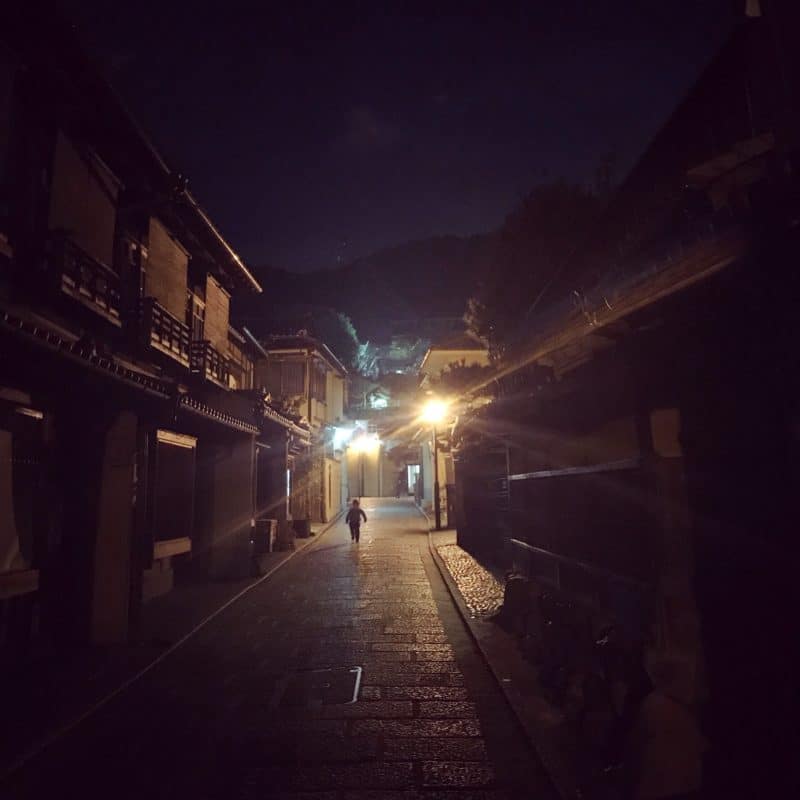
Allocate time and space for children who regulate by making noises or moving around
“My 6 year old needs to grunt and move. We chose to stay at Mimaru as the rooms are bigger and he could have downtime to be himself in the mornings and evenings. We also put parks and playgrounds into our daily plans- thanks to your blog, Jo !”
See here for more information on Mimaru hotels and here for Tokyo playground suggestions. I also have an article called “Noisy Kids and Japan: How does that Work?”
“I prepare an itinerary for all our (adult) family members so I’m not being asked constantly about travel/plans. And it gives our neurospicy brains time to prepare for what is coming next.”
“Get super super fussy about accommodation choices. I went to apartment style hotels often with large floor space (eg. paid for a quad room for the three of us to get more relaxation nooks.) We didn’t stay near giant stations. Stay one or two stops away at little stations so your first navigation of the day is quiet/simple.”
“We almost always hike when we travel because time spent moving his body away from crowds is the rest he needs. I love hiking from Kanazawa Bunko Station to the the temples in Kamakura. It’s a great way to see Kamakura and have that nature time.” This parent kindly shared the link to this hiking route here. This link shoes the beginning of the route at Kanazawa Bunko Station. “Ultimately I head on the Tenen Course towards Kenchoji Temple. It drops you at the top of the temple and you pay ¥500 entrance fee. “
Include children in the logistics (if that’s their thing)
“Give them jobs: my son (12) loved following google live and google maps. I made him responsible for train navigation and he loved it. He loved reading the signs, platform numbers, checking off the stops.”
Always have an exit plan
“As parents of ND we need to be patient with our little ones and prepared to sometimes have an exit plan. If you plan to visit a certain area check if there are local parks nearby where your kids can get the wriggles out, have some space and quiet time if they need it. You can have a look on Google Maps for areas but some of the real gems are not so easy to find so check Jo’s blog for park recommendations in each area.
You don’t need to navigate the trains to get back to your hotel jump in an air-conditioned taxi and take it directly to your hotel to avoid the busy trains.”
Allow time to slow travel
“I’m on the autistic spectrum and I really need time to take things in. I get overwhelmed but that isn’t a bad thing. I need to stop and really look and read and drink it all in.”
“We appointed one person each day to be the break monitor! Every two hours we would consider where we could sit and relax for 30 mins , have a drink or get an ice-cream.”
Take a mid-day break and then return out to continue Japan adventures again in the evening
“Making sure to pace your day in the same way you would at home is so so important. It’s also important for us to make sure our kids don’t get too tired for the next day. When they are overtired they are also more likely to not sleep well and are more likely to hurt themselves. Pacing our adventures is so important for today and for tomorrow’s sake. For this very reason, choose a convenient hotel is really important for us.”
“Being in an apartment hotel (Mimaru) helped so much as going back at night and having space to unwind and decompress, eat dinner in our hotel and totally flake – was essential.” I have a detailed tour of a Mimaru Apartment Hotel here.
Keep expectations realistic
“In general, we had to lower our expectations. There were days when the sensory overwhelm was too much and my daughter couldn’t cope with putting on socks to go outside. But by letting go of a tightly planned itinerary, we could just go with what worked for us on any particular day. We all had a brilliant time, and that was largely due to your blog – thank you so much for helping us all be prepared.”
“I love how your blog has so many park ideas because we always have to do a day of unstructured play (a nature palette cleanse) after two city days. It means we see less but we enjoy the things we do see more.” See examples of my area suggestions here that incorporate kid-friendly restaurants, sightseeing, shopping and parks here.
“We don’t plan anything for travel days. Even if our flight is late at night or early in the morning, we go with the flow on that day.”
“We have built in breaks throughout the itinerary. The urge to fill it up with activities and “see as much as we can” is just a recipe for disaster. Especially when you factor in sensory processing challenges. Rest is a necessity. If we are up for it, we can always do more. ” I have an article here that helps you plan a Japan holiday with kids step-by-step that could also help families start the planning process.
Don’t villainize screens
“So this isn’t Tokyo specific but SE Asia travel with an ADHD kiddo.. don’t villainize screens. We incorporated structured blocks of screen time into our days to give him time to decompress and having control over the screen (what he watched or played) helped him have more energy to cope with the things of travel that you cannot control.”
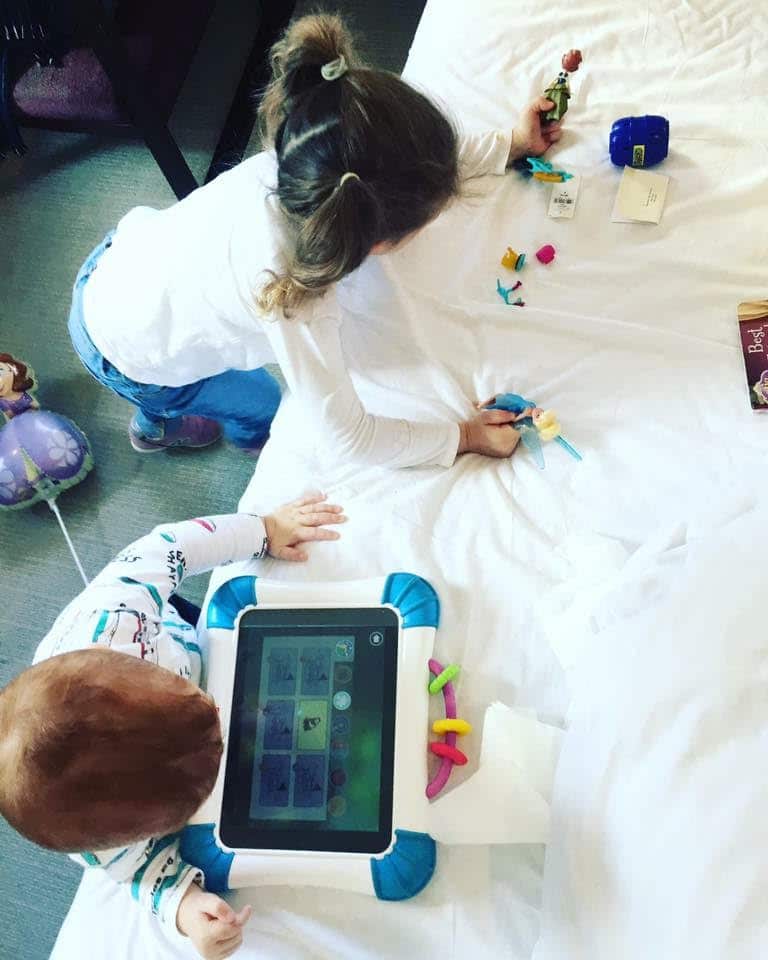
Make sure that everyone in the family gets to eat the food they like/need
“For Parents: a lot of great restaurants are on uber eats in Japan. If you’re feeling bummed out that you can’t eat sushi or another type of food because your kiddo is struggling with food refusal or picky eating, you can always have it sent to the hotel. No, it’s not ideal but it’s a good option for days when things are tough.” (I also have lots of food courts or ways for everyone in the family to be able to eat a variety of different cuisines at once in my article here.)
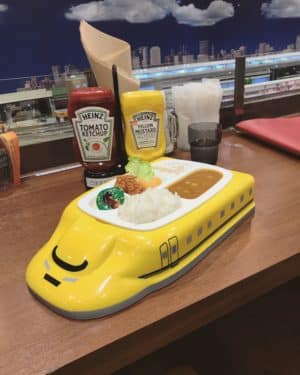
WHICH PLACES MIGHT BE BEST TO AVOID IN JAPAN IF YOUR CHILD HAS SENSORY AVERSIONS?
Don Quijote
In case you’re not aware, Don Quijote is a large “we sell everything” department store and they are all over Japan. The lighting is bright fluroscent and everything flashes. There is also a loud jingle that plays in the store on repeat.
It is actually a fantastic place to buy Japan souvenirs – but if your child might not cope with the lights and sounds – maybe give this one a miss.
Anime, Video Game and Manga related parts of Akihabara and places like the Pokemon and Nintendo stores
“My 12 year old had a hard time in Akihabara and found it completely overwhelming and frightening in some parts.”
“There are so many tech stores in Akihabara, we found a hard copy map at the front of one of the big stores that had a great legend on it showing what type of shops are where. If your child has a particular interest of a video game they love, I would do some research about where you can find that particular merchandise. There are a number of stores where you can play video games in the area but they weren’t as obvious to find as I thought they would be so again research and have the location of a couple already in mind before you go.”
“Lots of ND kids love video games but Tokyo can be overwhelming if you don’t have a plan of where to go. The Nintendo and Pokemon stores in Akihabara get crowded, it’s can be loud, hard. to move around, you need to be patient waiting for people to move to see things on
the shelves and the line up for cash registers gets crazy particularly for the Pokemon store.
The Pokemon store had a person dedicated to holding a sign that indicated. where the end of the queue was and the queue wrapped around the entire edge of the store. If you decide to visit you might have to divide and conquer if you are travelling with both parents, with one lining up to pay while the other whisks the kids away to another part of the shopping centre.
If you just want cute soft toy, lots of department stores sell a great range without the huge crowds. If you’re going to USJ save your purchases until there, they have so much Nintendo merchandise in Super Nintendo World. Also, the department stores are just fun to check out all sorts of fun toys and displays.
Team Lab Planets vs Team Lab Borderless
Please note that Team Lab Planets opened a new section Jan 22, 2025.
The new areas are “Catching and Collecting Forest” and “Athletics Forest.” Both are stunning and both are so interactive and great for kids. Both are also very colourful and can be loud.
See footage of the new Team Lab Planets sections here to see if it’s right for you.
A few Aussie readers have told me that they have had issues booking Team Lab Planets directly from the official website with their credit cards. If you have no other credit cards to use, I can also recommend booking Team Lab Planets via Klook here. Please note that this is an affiliate link (this means that I make a small commission if you make a purchase -at no additional cost to you.)
“Teamlab Planets – if your child is finding it overwhelming it could be hard to find an exit plan as you flow through from one area to the next.
Keep in mind there’s a big black room with big soft cushions in it that can be hard to move through. There’s also an area where you walk through shin-depth water which some kids with sensory. issues might find challenging or get over excited and might inadvertently splash
people making for a stressful situation for everyone.
Team Lab Borderless might be the better of the two options to get the light installation experience without the other sensory parts and there is a bit more freedom to move between areas compared to TeamLab Planets.”
HOW TO NAVIGATE UNAVOIDABLY BUSIER LOCATIONS SUCH AS FESTIVALS, SPECIAL EVENTS AND THEME PARKS?
“At theme parks, show (youtube) clips of the rides beforehand so that they know what to expect.”
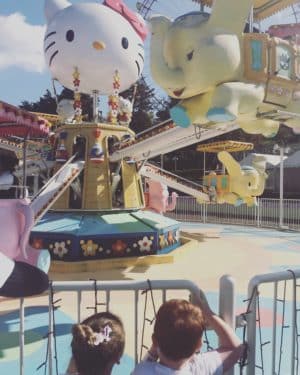
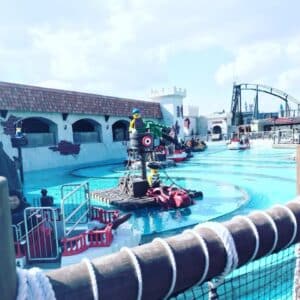
“My son has autism and is unable to stand for a long period of time due to poor muscle tone. At Tokyo Disney Parks, as long as you have a letter from your GP, you can get an allotted time to return to the rides so you don’t have to stand in the queue. It’s not faster than waiting but saves you having to stand.” (Tokyo Disney Parks also have a child switch option that can also be used by families who have one child who wants to ride one ride and another doesn’t. I explain more about that here.)
“We went with neurodiverse kids 6 & 9 to DisneySea. Our kids used their noise cancelling headphones for most of the day, there are quieter areas of the park near the back of the park around the old town New York are.”
“We watch POV videos to make sure our daughter is fully prepared as we all know which rides we can try with her and which are best to be avoided.”
“Happy to chat! Both kids are autistic and ADHD. We read up on Disney and Universal and got letters from their doctors explaining their disabilities and why lining up is super tricky. Guest services at both places were amazing and helped us with passes to virtually queue- ie. check in, and come back when it was our turn. It made a massive difference to our experience.” See here for the information on how Disney fast passes and the queuing system in general works.
“We take hotel breaks in the day and try to stay as close to the parks as possible. Even though our daughter is past napping stage, there is no tired like Disney tired. Naps are essential- even for us.”
To help with planning and Disney strategy – here are all of my family-friendly tips for Tokyo Disneyland, Tokyo Disneysea, Legoland Nagoya and Universal Studios Japan.
Here is the link for support services for Tokyo Disney guests with Disabilities.
Here is the link for information on the Guest Support Pass at Universal Studios Japan. (Like Disney, there are no fast passes for Guest Support Pass holders but you have the option to wait in a virtual queue.)
Please note: THE NEW DONKEY KONG COUNTRY SECTION: Opens Dec 11.
It will be sooooo busy from Dec – June 2025 so please please please please get all the express passes you can (need to be purchased ahead of time.) With kids, I wouldn’t make promises that you will get to see this new land BUT you may get to see more of the others as the crowds will be focused on this section (great news for Super Nintendo World and Harry Potter fans!)
Please note that a sunflower lanyard is rarely recognized in Japan. You are welcome to have children wear them -but most people will innocently have no idea what they signify.
WHICH PARTS OF JAPAN ARE FABULOUS FOR MANY NEURODIVERGENT KIDS?
“They loved the quiet, orderly way things run in Japan. They loved that everything is so clear- like the crossings that tell you how long you have to cross. They picked up the etiquette so quickly.”
So where to start my research on what medication is and isn’t allowed in Japan?
–The Ministry of Health, Wealth and Labour of Japan website
–The Narcotics Department website Japan page
–The Japan Travel: Bringing Medicines into Japan page
–The Smart Traveller website
*I thought most people would know this already but I did have to explain to someone recently that you CANNOT bring cannabis oil into Japan. So if it says THC on it – it’s automatically a hard no. Cannabis/Marijuana/Hemp are all illegal in Japan – in any form (including gummies, oil, cookies.) Opioids, adderall and epinephrine are illegal in Japan as well.
This blog post contains some affiliate links. This means that I will receive a small commission if you make a purchase using my link – at no additional charge to you.
